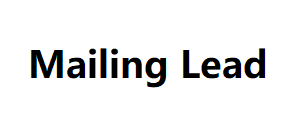Behavioral triggers are a powerful way to automate your email marketing and improve your results. By sending emails based on specific actions or behaviors, you can ensure that your messages are always relevant and timely. Here are some of the benefits of using behavioral triggers in your email marketing: Increased relevance and engagement: When you send emails based on what your subscribers have already done, you’re more likely to capture their attention and get them to open and read your messages. Improved click-through rates: When your emails are relevant and timely, your subscribers are more likely to click on the links you include. This can lead to more website visits, sales, and other conversions.
How to Use Behavioral Triggers There are a number of different
Ways to use behavioral triggers in your email marketing. Here are a few examples: Welcome emails: Send a welcome email to new subscribers as soon as they sign up for your list. This is a great opportunity to introduce yourself and your brand, and to provide them with some valuable content. Abandoned cart emails: If a subscriber adds items to their cart but doesn’t complete their purchase, send them Shadow and Reflection an abandoned cart email. This is a great way to remind them of what they were interested in and to encourage them to finish their purchase. Product recommendations: Send product recommendations to subscribers based on their past purchases or browsing history. This is a great way to cross-sell and upsell your products, and to keep your subscribers engaged. Re-engagement emails: If a subscriber hasn’t opened or clicked on your emails in a while, send them a re-engagement email.
This is a great way to remind them about your brand and to encourage
Them to start interacting with your emails again. Choosing the Right Behavioral Triggers The best behavioral triggers for your email. Marketing campaigns will depend on your specific goals and objectives. However there are a few general things to keep in mind when choosing. Behavioral Mailing Lead triggers. Make sure the triggers are relevant to your subscribers. The triggers you choose should be relevant to the interests and needs of your subscribers. This will help to ensure that your emails are well-receiv and that your subscribers are more likely to engage with them. Use a variety of triggers: Don’t just rely on one or two behavioral triggers. By using a variety of triggers, you can ensure that your emails are always relevant and timely. Track your results: It’s important to track the results of your behavioral trigger campaigns so that you can see what’s working and what’s not.







